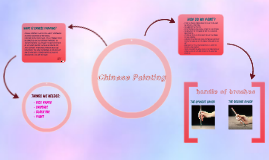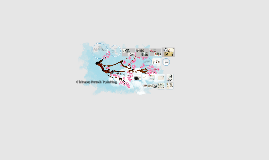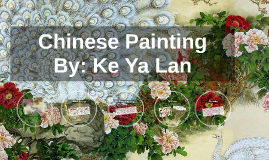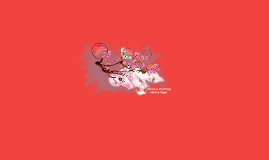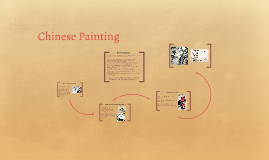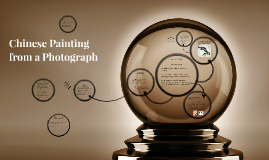Chinese Painting
Transcript: Chinese Painting What is Chinese Painting? More information... In the early years Chinese paintings were merely decorative and ornamental in subject rather than representational, containing patterns and designs. Later, Chinese paintings became more representational depicting real world things like people, animals and landscapes. Painting and calligraphy were the highest prized arts. Used black inks made from pine soot and animal glues. Before the invention of paper in the 1st century, painting and calligraphy were done on silk! The Subjects of Chinese Paintings... The "Six principles of Chinese painting" were established by Xie He, a writer, art historian and critic in 5th century China. He is most famous for his "Six points to consider when judging a painting" Keep in mind that this was written circa 550 AD and refers to "old" and "ancient" practices. 1. "Spirit Resonance", or vitality, and refers to the flow of energy that encompasses theme, work, and artist. Xie He said that without Spirit Resonance, there was no need to look further. 2. "Bone Method", or the way of using the brush. This refers not only to texture and brush stroke, but to the close link between handwriting and personality. In his day, the art of calligraphy was inseparable from painting. 3. "Correspondence to the Object", or the depicting of form, which would include shape and line. 4. "Suitability to Type", or the application of color, including layers, value and tone. 5. "Division and Planning", or placing and arrangement, corresponding to composition, space and depth. 6. "Transmission by Copying", or the copying of models, not only from life but also the works of antiquity. Six Principles One of the oldest artistic traditions in the world that still continues today! Are made by using ink and watercolor. Calligraphy also tends to be a component of Chinese paintings. To the right you will see a landscape, which is very often the subject of Chinese paintings.






